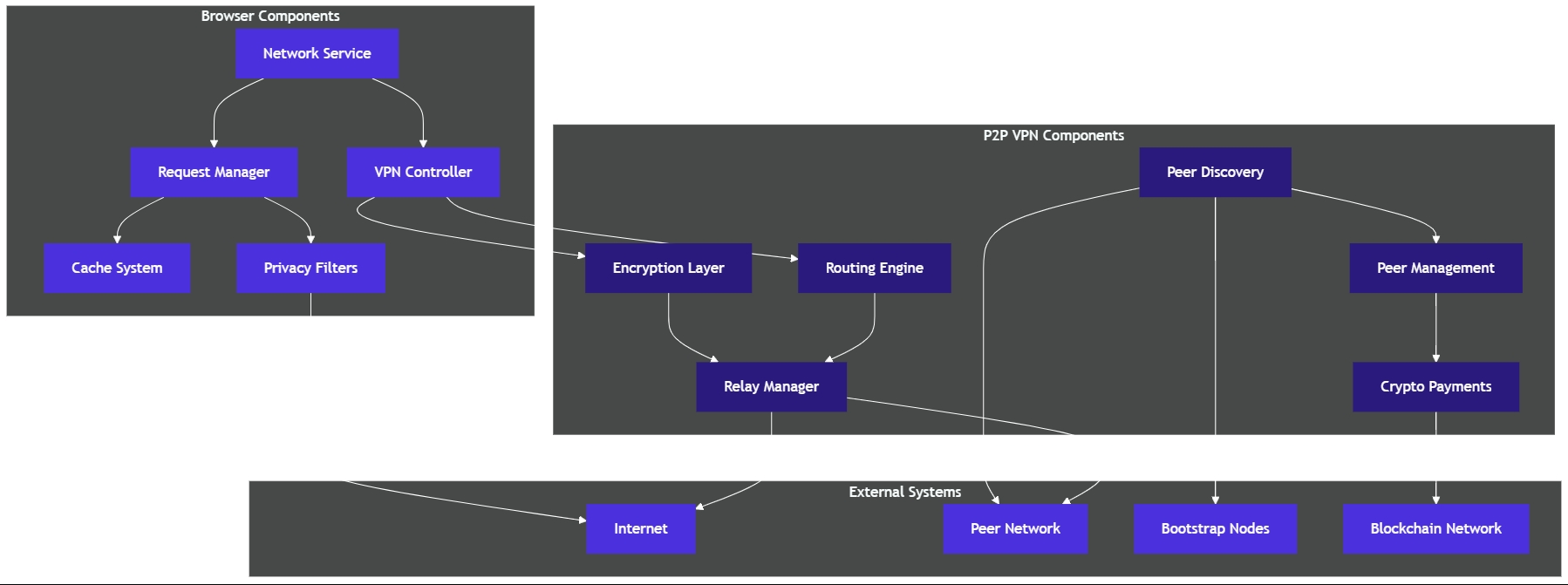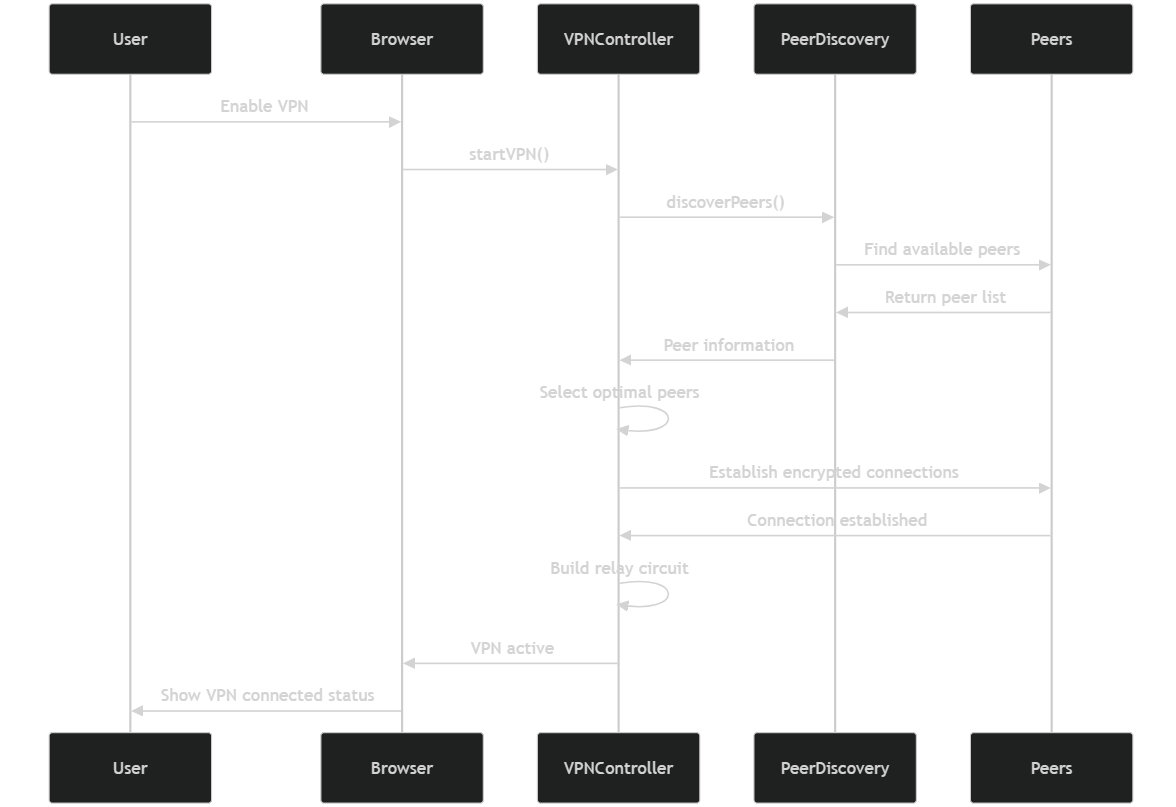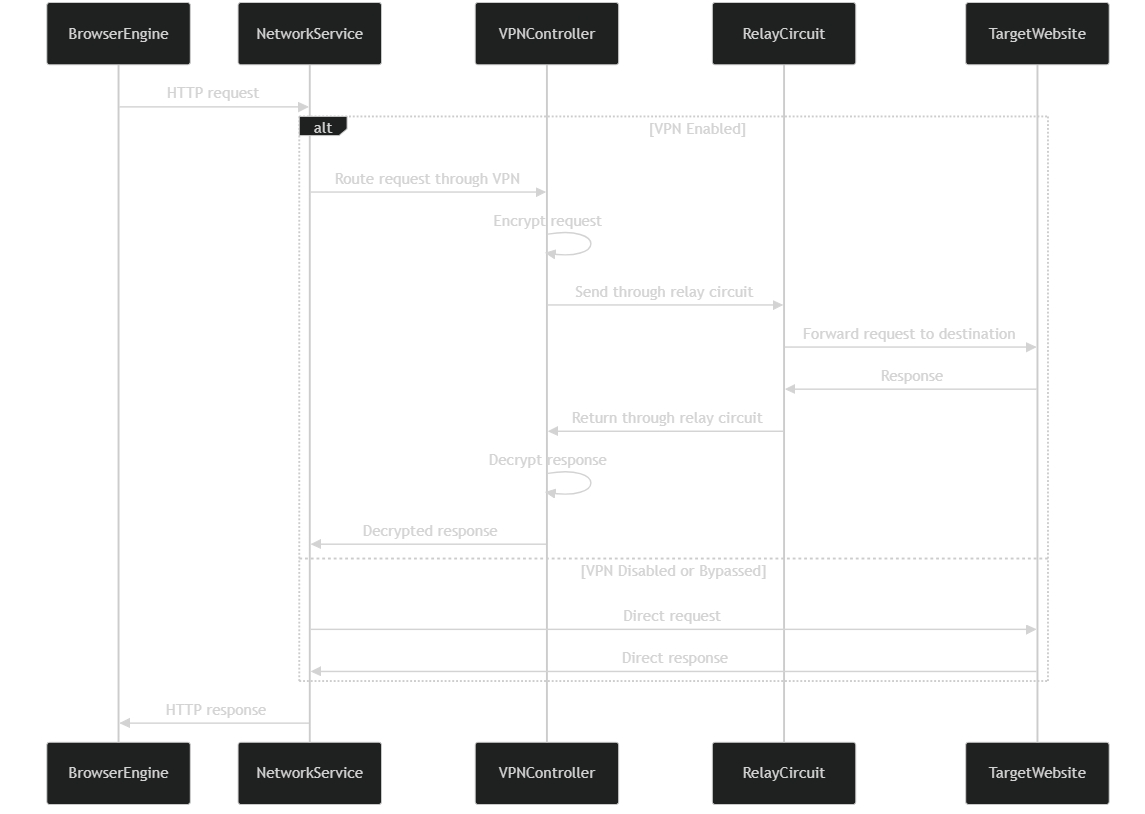Network Architecture
Network Architecture
Mesh P2P VPN with distributed routing and verifiable paths.



Mesh VPN Architecture
Decentralized routing system:
Network Topology
Distributed peer-to-peer mesh
No central VPN servers
Global node distribution
Dynamic routing based on health
Node Types
Entry Nodes - Your traffic enters the mesh here. Multiple entry points for redundancy, geographically distributed.
Relay Nodes - Intermediate hops in the route. Each knows only previous and next hop. Onion-style routing for privacy.
Exit Nodes - Traffic exits to destination here. Choose exit location. Load-balanced across exit points.
Routing Protocol
Dynamic path selection:
Route Building
Client requests route from entry to exit region
Routing algorithm selects path based on node health scores, latency metrics, geographic distribution, and load balancing
Establishes encrypted tunnel through selected nodes
Monitors route health continuously
Route Optimization
Multi-path routing for redundancy
Automatic failover to healthy routes
Latency-based path selection
Avoid congested nodes
Encryption
Multi-layer encryption:
Onion Routing
Each hop encrypted separately
Node A can't see what Node C knows
End-to-end encryption on top of hop encryption
Protocol
ChaCha20-Poly1305 for speed
Curve25519 for key exchange
Perfect forward secrecy
No logs of encryption keys
Health Monitoring
Real-time route health:
Metrics Tracked
Latency per hop
Packet loss rates
Bandwidth availability
Node uptime
Visual Display
Route map showing path
Health indicator per hop (green/yellow/red)
Estimated total latency
Real-time throughput
Auto Re-routing
If hop degrades, re-route around it
Seamless transition (no connection drop)
User notification of route change
Health improvement triggers route recalculation
Node Operation
Community-run infrastructure:
Node Operators
$MACRO stakers
Community members
Ecosystem participants
Requirements
Minimum $MACRO stake
Stable internet connection
Sufficient bandwidth allocation
Uptime commitments
Reputation System
Performance-based scoring
Uptime tracking
User ratings
Reward multipliers for high-quality nodes
Rewards
$MACRO earnings based on:
Traffic routed
Uptime percentage
Reputation score
Network demand
Geographic Distribution
Global coverage:
Regions
North America (US, Canada)
Europe (UK, Germany, Netherlands, France)
Asia (Singapore, Japan, Hong Kong)
Others (Australia, South America)
Exit Node Selection
Auto (best performance)
Specific country/region
Nearest to destination
Random (maximum privacy)
Traffic Analysis Resistance
Prevent correlation attacks:
Timing Obfuscation
Random delays injected
Traffic padding
Packet size normalization
Flow Correlation Prevention
Multi-hop routing
Different paths for different streams
Session rotation
Performance
Optimized for speed:
Benchmarks
Overhead: ~15-25ms average added latency
Throughput: 80-95% of direct connection
Better than traditional VPNs (no single chokepoint)
Optimizations
Smart route caching
Persistent connections where safe
UDP support for low-latency applications
QoS prioritization
Failover & Redundancy
Always-on connectivity:
Automatic Failover
If route fails, instant failover to backup
Multiple backup routes pre-computed
No user intervention required
Kill Switch
Optional: block all traffic if VPN fails
Prevent IP leaks
Auto-reconnect attempts
Configurable per profile
Decentralized. Verifiable. Fast.
Last updated